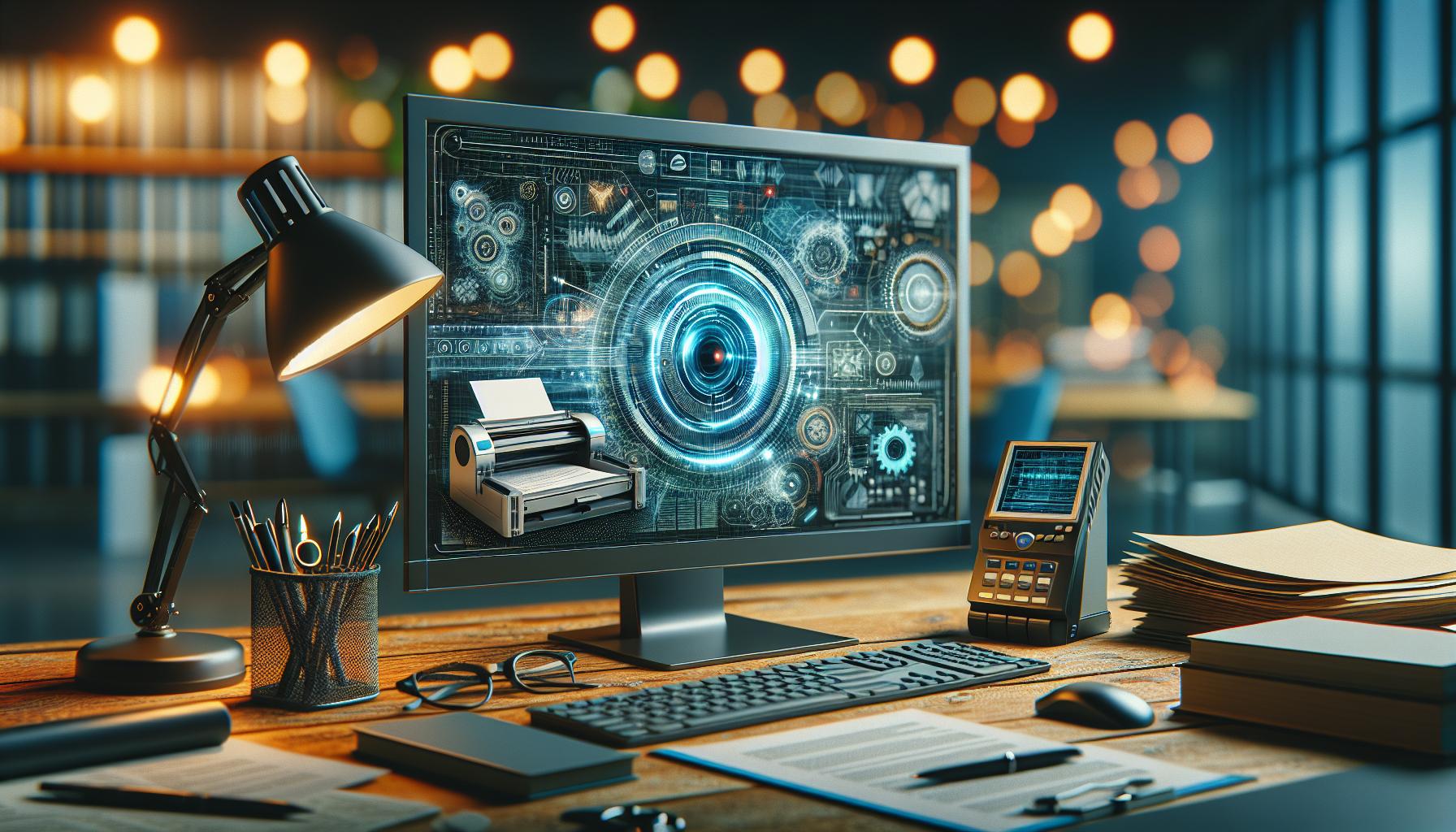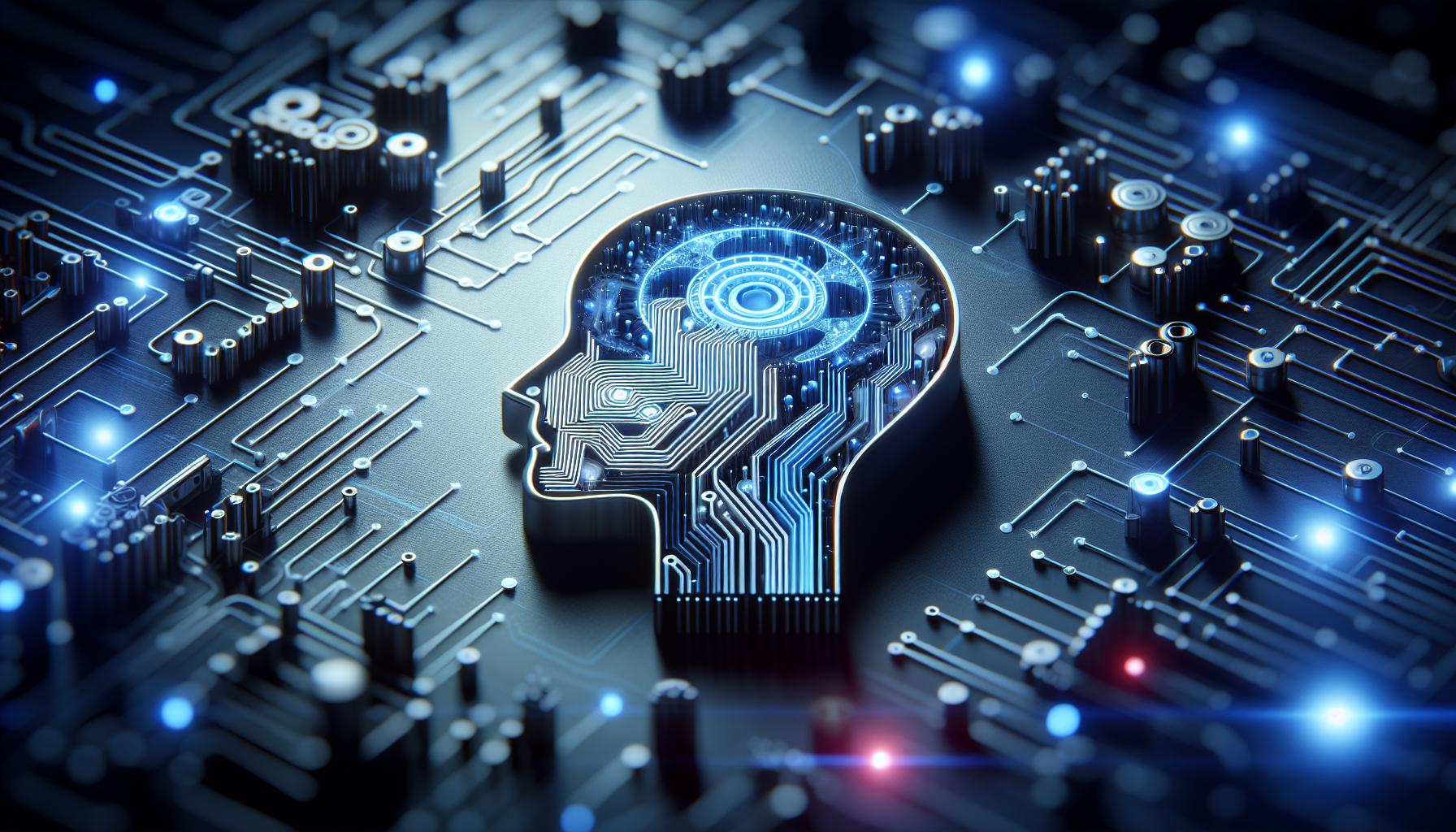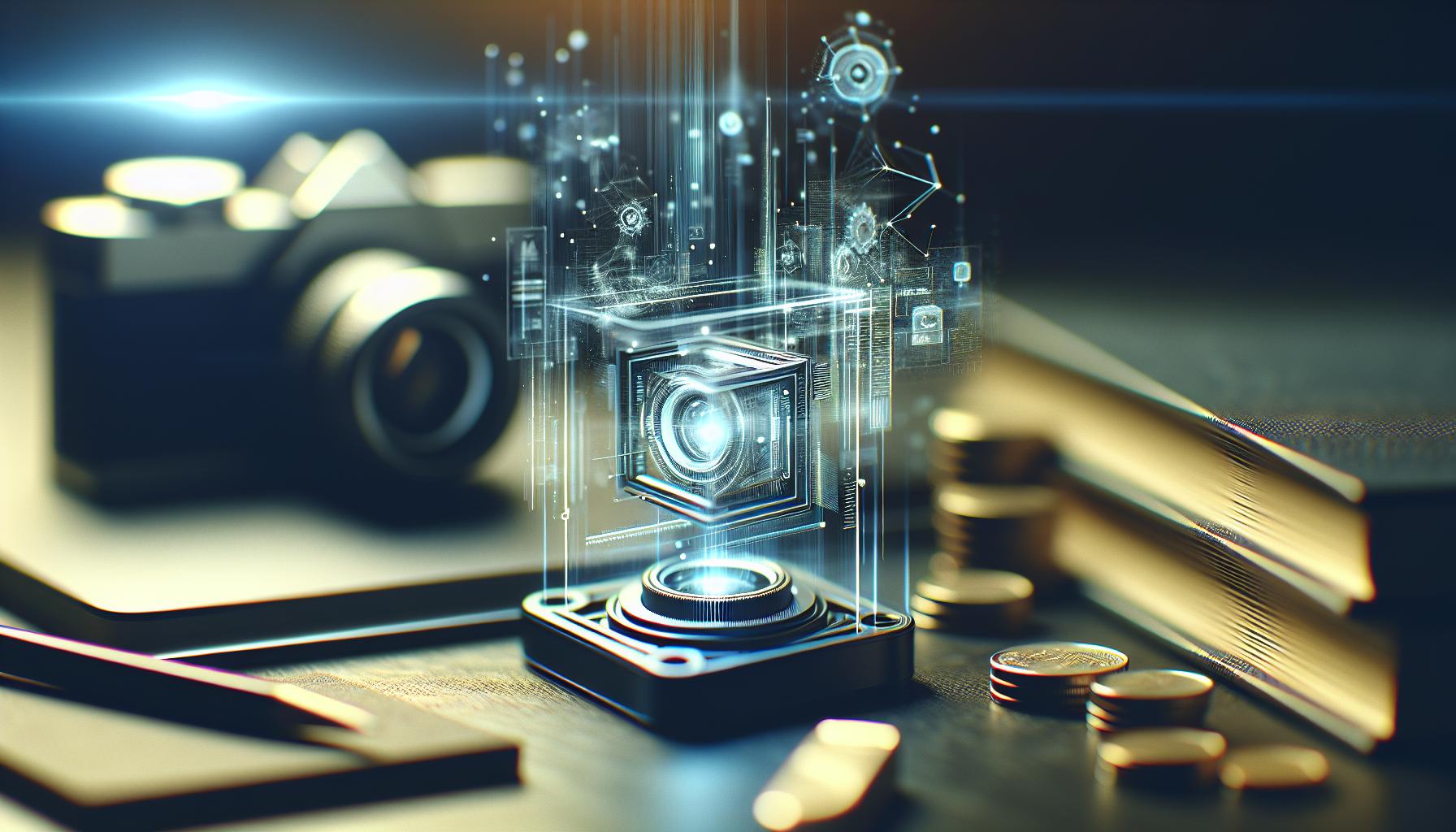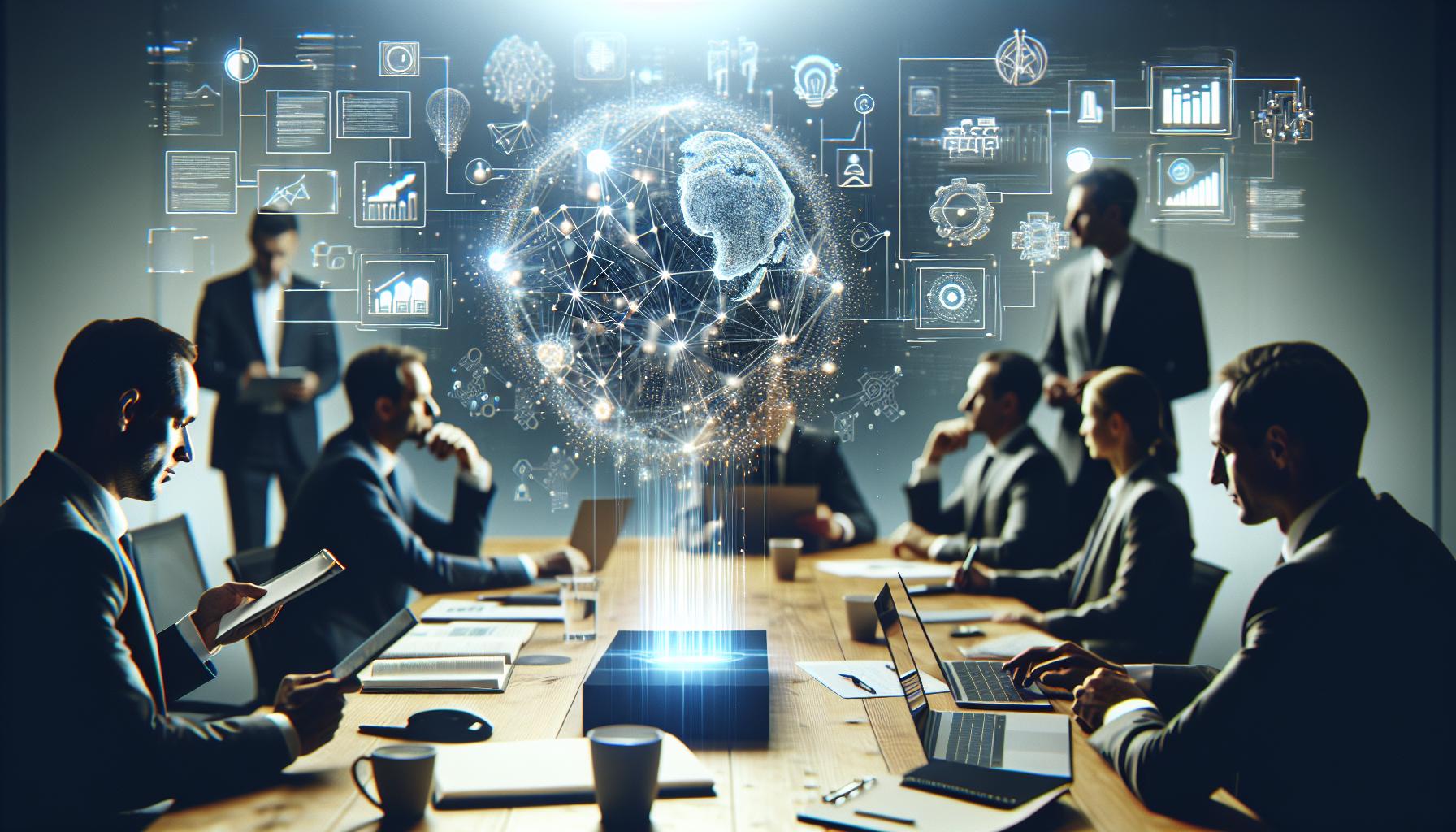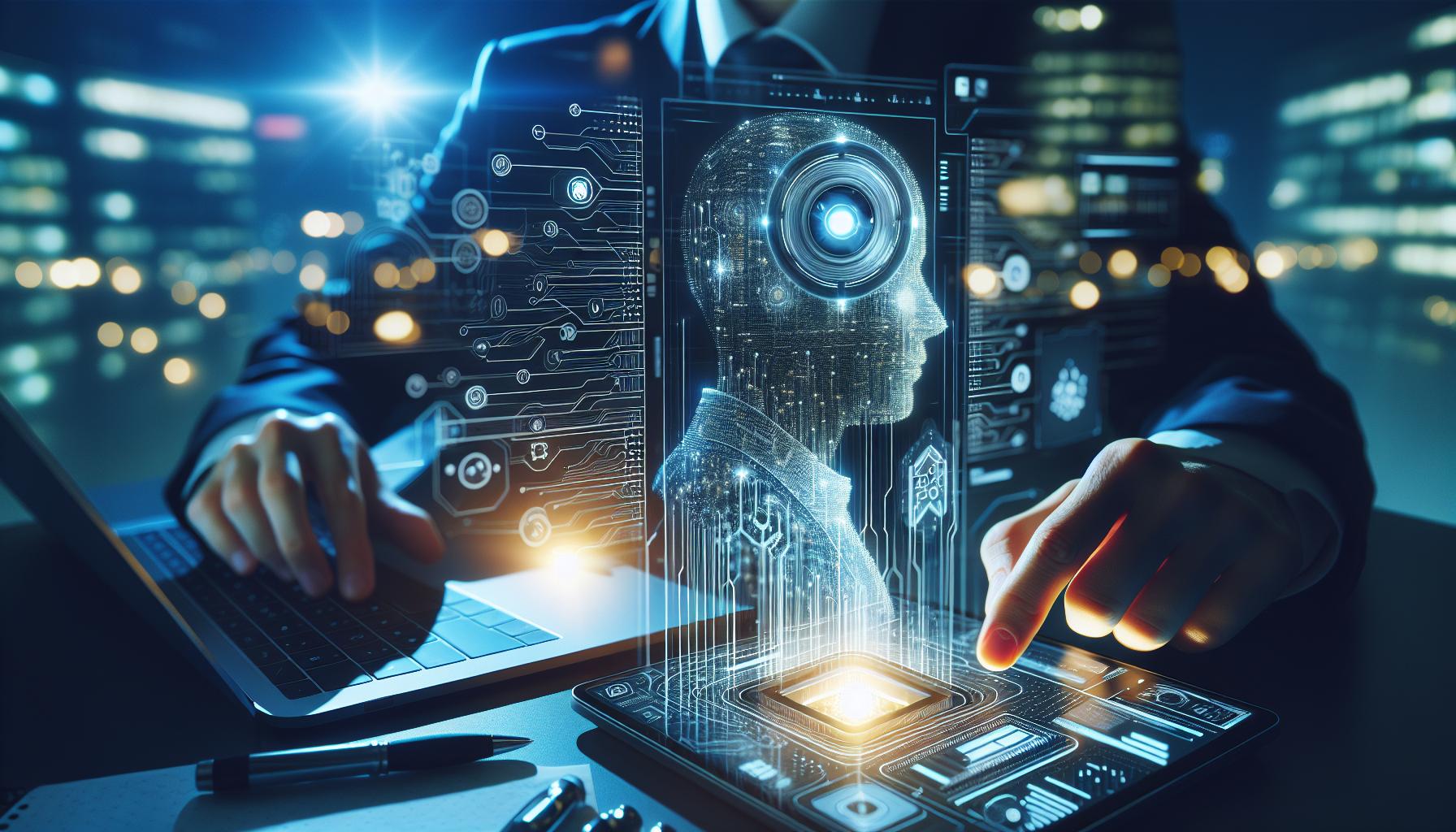In a world inundated with text-based data, the ability too extract insights from scanned documents is vital for businesses and individuals alike. Can AI tools like ChatGPT effectively interpret these files, or are they limited to digital text? Understanding this capability is crucial as we navigate the evolving landscape of data processing.
Understanding Scanned Documents: What You Need to Know
Unlocking the Power of Scanned Documents
In today’s digital age, scanning documents has become an essential tool for productivity and record-keeping. Whether for buisness,education,or personal use,understanding how scanned documents work is crucial. Scanned documents typically refer to physical papers that have been digitized through a scanner. Once they are converted to digital format, these documents can be stored, edited, and shared easily. Moreover, with advancements in technology, tools like ChatGPT have emerged to help interpret these documents effectively.
Where Do Scanned Documents Go?
When you scan a document, the location where it is indeed saved can vary based on the settings of the scanning application you use. Most commonly, scanned files are saved in specific folders within the user’s document directory. Here are typical locations you might find your scanned documents:
- C:users[YourUsername]DocumentsScanned Documents
- C:Users[YourUsername]DocumentsMy Scanned Documents
- Alternatively, you can search for them directly via Windows Explorer by using file type filters or searching by date.
Additionally,understanding how to manage and retrieve these files efficiently can streamline your workflow,especially if you’re using an AI like ChatGPT to analyze or interpret the contents of scanned files.
how Can ChatGPT Assist with Scanned Documents?
The question of whether ChatGPT can read and interpret scanned documents is becoming increasingly relevant. While conventional chatgpt may not directly read images or scanned files, ther are tools and technologies that convert scanned images into text (OCR – optical Character Recognition) that ChatGPT can then process. Integrating these technologies allows for a more seamless interaction with your documents. Here’s how you can leverage this:
| Step | Action |
|---|---|
| 1 | Scan your document using a scanner. |
| 2 | Save the scanned file in a known location. |
| 3 | use OCR technology to convert it into a text format. |
| 4 | Input the text into ChatGPT for analysis or interpretation. |
This process not only makes it easier for you to interact with your scanned documents but also amplifies the practical uses of AI, enhancing document management and accessibility in various settings.
the Role of Optical Character recognition in Document Interpretation
The Importance of Optical Character Recognition (OCR) in Document Processing
Did you know that the process of converting scanned images into editable and searchable text is possible thanks to Optical Character Recognition (OCR)? This technology acts as a bridge between the physical and digital worlds, enabling applications like ChatGPT to read and interpret scanned documents effectively. OCR makes it feasible for organizations to digitize vast amounts of paper documents, thereby streamlining workflows and enhancing accessibility.
How OCR Works
OCR technology relies on advanced algorithms to analyze the shapes and patterns of letters and words in scanned documents.Here’s a brief overview of the typical OCR workflow:
- Image Acquisition: Scanned documents are captured using scanners or cameras.
- Preprocessing: Images are cleaned and enhanced to improve the quality for recognition.
- character Recognition: The OCR software processes each character, converting it into machine-encoded text.
- Postprocessing: The recognized text undergoes grammatical and contextual checks to ensure accuracy.
Understanding this process is essential, especially when considering applications that utilize OCR for reading and interpreting scanned documents.For instance, businesses often employ OCR for digitizing invoices, contracts, and reports, allowing tools like ChatGPT to extract relevant information seamlessly.
Challenges and Solutions in OCR Implementation
While OCR has significantly advanced, it is not flawless. Several challenges can arise when scanning and interpreting documents, including handwritten text, different fonts, and poor image quality. To combat these issues, practitioners should:
- Utilize high-quality scanners to ensure precise image capture.
- Choose OCR software that supports multilingual text and diverse font types.
- Regularly train OCR systems with varied data sets to improve accuracy.
To illustrate, a law firm transitioning from paper to digital archives faced challenges with handwritten notes. By implementing an upgraded OCR system skilled in recognizing diverse handwriting styles, they enhanced their document management process, enabling tools like ChatGPT to assist in summarizing case files efficiently.
| OCR Challenges | Recommended Solutions |
|---|---|
| Poor image quality | Use high-resolution scanners |
| Inconsistent text formats | Employ versatile OCR software |
| Handwritten text transcription | Implement machine learning for handwriting recognition |
Thus, understanding and addressing the role of OCR in document interpretation is crucial for anyone looking to leverage technology such as ChatGPT for reading and interpreting scanned documents efficiently.
how chatgpt Processes Text: A Deep Dive into AI Capabilities
the capability of AI language models like ChatGPT to process and interpret information from various text formats opens up exciting possibilities across numerous fields.Understanding how this technology operates, notably in relation to scanned documents, sheds light on its robust capabilities and potential limitations.
The mechanics of Text Processing
At its core, ChatGPT functions through a complex interplay of natural language processing (NLP) and deep learning algorithms. Here’s a closer look at how it handles text data:
- Data ingestion: ChatGPT is trained on vast amounts of text data, allowing it to recognize patterns in language usage, grammar, and semantics.
- Tokenization: When input is received, the model divides the text into smaller pieces called tokens.This helps the AI to better understand the context and meaning of the information presented.
- Contextual Understanding: Utilizing its transformer architecture, ChatGPT pays attention to the relationships between tokens. This means it doesn’t just see individual words; it interprets how they relate to one another within sentences and larger text passages.
Challenges with Scanned Documents
When it comes to understanding scanned documents, the process becomes more intricate. Unlike digital text files, scanned documents are images of text that require additional steps for interpretation.Here’s how ChatGPT’s features interact with such formats:
- OCR Technology: To read scanned documents, Optical Character Recognition (OCR) technology is essential. This technology converts images of text into machine-encoded text, enabling tools like ChatGPT to process the content.
- Limitations in Interpretation: While ChatGPT can provide insights based on the text output from OCR, discrepancies in character recognition may lead to inaccuracies in context and meaning, particularly with complex formatting or handwritten text.
- Enhancing OCR Preprocessing: Companies can boost the effectiveness of chatgpt in interpreting scanned documents by ensuring high-quality scans and preprocessing images to highlight text clearly before feeding them into an OCR tool.
Practical Applications and Real-World Impact
Manny industries can benefit from integrating ChatGPT with OCR capabilities, especially in scenarios that involve dense documentation. Such as:
| Industry | Application | Benefits |
|---|---|---|
| Healthcare | Digitizing patient records | Improved data accessibility and analysis |
| legal | Reviewing contracts and case files | Streamlined information retrieval |
| Education | Processing student submissions and notes | Enhanced feedback delivery and learning insights |
By leveraging the capabilities of AI, organizations can efficiently convert and interpret scanned documents, making data-driven decisions faster and more accurately. Understanding the intricacies of how ChatGPT processes text allows users to harness its full potential while navigating its limitations, particularly in reading and interpreting scanned documents.
The Limitations of AI: Can ChatGPT Truly Comprehend Context?
While artificial intelligence has made incredible strides in processing and generating language, its abilities raise important questions about understanding context, especially when it comes to complex tasks like reading and interpreting scanned documents.Many users wonder, can ChatGPT read and interpret scanned documents? The reality is that AI’s comprehension of context and nuance is still evolving, and there are notable limitations.
Understanding Context: The Challenge for AI
Context is essential in human interaction,providing clarity and depth. As an example, the meaning of a phrase can drastically change depending on the surrounding information or the emotional tone conveyed. AI models like ChatGPT rely on vast datasets to generate responses, but they do not possess true contextual understanding in the way humans do.Instead, they operate on learned patterns from text data, leading to challenges in accurately interpreting scanned documents which may contain intricate layouts, varied fonts, or nuances specific to certain contexts or industries.
- Document Complexity: Scanned documents might include tables, graphs, or images that require spatial understanding.
- Multimodal Contexts: They may also incorporate various formats (text, handwriting, symbols) that the AI might struggle to decipher accurately.
- Semantic Nuances: Idiomatic expressions or sector-specific jargon can lead to misunderstanding, as the AI lacks situational awareness.
real-World implications
In practical terms, these limitations can affect the utility of AI in professional settings. For example,consider a legal document featuring contractual clauses—misinterpretation could possibly lead to serious consequences. Can ChatGPT read and interpret scanned documents in a scenario like this? While it can extract text using Optical Character Recognition (OCR) technology, the critical subtleties that influence legal decisions may not be captured.
| Limitation | Description |
|---|---|
| Text Interpretation | AI may not grasp idiomatic or culturally specific references common in scanned documents. |
| Layout recognition | Graphs, images, and complex formatting can be misinterpreted or ignored. |
| Semantic Clarity | Ambiguities in language or textual context may result in incorrect interpretations. |
While ChatGPT and similar models demonstrate remarkable abilities, understanding the limitations of AI in context comprehension is vital for users, especially when exploring tools that claim to read and interpret scanned documents. Users must remain mindful of these constraints and consider complementing AI capabilities with human oversight to ensure accurate document interpretation and communication.
Comparing ChatGPT with Other AI Tools for Document Reading
When it comes to reading and interpreting documents, especially scanned ones, the landscape of AI tools is rapidly evolving. While many users wonder, can ChatGPT read and interpret scanned documents?, it’s essential to evaluate its capabilities against other prominent AI solutions in this domain.
Understanding the Competitive Landscape
In the burgeoning field of document processing and analysis, various AI tools offer unique functionalities tailored to different user needs. Here are a few notable competitors:
- Adobe Acrobat Pro DC: known for its robust PDF editing capabilities, it includes OCR (Optical Character Recognition) technology that allows users to convert scanned documents into editable text.
- Google Cloud vision: This powerful API aids in extracting text and information from images, making it suitable for developers looking to integrate image recognition features into their applications.
- Microsoft OneNote: Known for its note-taking features, it also has OCR capabilities that allow users to copy text from images, catering to those who need fast annotations.
- Tesseract: As an open-source OCR engine, Tesseract is favored by developers and tech-savvy users who want to customize their document processing functionalities.
Feature Comparison: ChatGPT vs. other AI Tools
The primary distinction of ChatGPT lies in its conversational abilities and contextual understanding, which can enhance document interpretation beyond mere text extraction. below is a comparative overview that can definitely help users decide which tool aligns best with their needs:
| AI Tool | OCR Capability | Conversational Interaction | Document Editing | Integration with Other Tools |
|---|---|---|---|---|
| ChatGPT | Limited (depends on integration) | Strong | No | API available for creative solutions |
| Adobe Acrobat Pro DC | Yes | No | Yes | Good |
| Google Cloud Vision | yes | No | No | Excellent API for integration |
| Microsoft OneNote | Yes | Limited (for notes) | Basic | Good with Office Suite |
| Tesseract | Yes | No | No | Highly customizable for developers |
By examining the unique features of ChatGPT along with its limitations, users can determine whether situational use of an AI-driven conversational interface complements other specialized OCR software. This multifaceted approach maximizes efficiency for those frequently utilizing scanned documents for various purposes. Ultimately, the choice among these tools will depend on specific tasks, integration requirements, and the desired level of user interaction.
Ethical Considerations: The Implications of AI Reading Your Documents
Exploring the Ethical Dimensions of AI Document Interpretation
as AI technologies, such as ChatGPT, advance in their ability to read and interpret scanned documents, significant ethical implications emerge for users and organizations alike. The process of enabling AI to access and analyze sensitive documents raises critical questions about privacy, consent, and data security. When documents contain personal or confidential information, it is essential to consider who has the right to access this data and how it might be utilized. The risk of unauthorized access or misuse of sensitive information is a major concern that organizations must address.
Key Ethical Considerations:
- Data Privacy: Ensuring that the scanned documents processed by AI systems do not expose personal information is paramount. Organizations should implement robust data protection protocols and anonymization techniques.
- Informed Consent: Users should be aware of how their documents will be used by AI systems. Clear communication about data handling practices fosters trust and aligns with ethical standards.
- Accountability: Organizations must establish accountability frameworks for how AI interprets documents. This includes having oversight mechanisms to audit AI decisions and actions.
Moreover, users must understand the limitations of AI tools.While ChatGPT can efficiently read and interpret scanned documents, it may lack the nuanced understanding that a human would bring to sensitive content. This limitation highlights the importance of human oversight, especially in critical decision-making processes where document interpretation plays a significant role. Training AI systems to recognize and flag sensitive content can alleviate some ethical concerns, ensuring that sensitive or harmful information is handled appropriately.
Real-World Implications
Organizations utilizing AI for document interpretation can proactively address these ethical challenges by integrating ethical AI principles into their operations. For example, companies could establish ethical review boards to evaluate the implications of AI applications in their workflows. Furthermore, adopting transparent practices, such as publicly disclosing data usage policies, can enhance public confidence in AI technologies. By being mindful of these ethical considerations surrounding the use of tools like ChatGPT for reading and interpreting scanned documents, businesses can navigate the complexities of AI deployment responsibly and ethically.
Enhancing Data Accuracy: Best Practices for Scanned Document Input
Boosting Data Accuracy in Scanned Document Input
The ability to extract data accurately from scanned documents is not just a nice-to-have; it’s crucial for ensuring that organizations can make informed decisions based on reliable information. With the rise of AI tools, including capabilities such as “Can ChatGPT Read and Interpret Scanned Documents?”, understanding best practices for enhancing data accuracy has become more critically important than ever. Here are effective strategies to ensure that data captured through scanned documents is as accurate as possible.
Utilize High-Quality Scanning Equipment
Investing in high-quality scanners capable of producing clear, high-resolution documents is essential. Poor quality scans often lead to inaccuracies in data extraction, as illegible text can confuse optical character recognition (OCR) systems. In addition to improving scan quality,it’s beneficial to regularly calibrate and maintain scanning equipment to ensure optimal performance and reliability.
Implement Robust Pre-Processing Techniques
Before data extraction, applying pre-processing techniques can significantly enhance accuracy. Techniques such as image binarization, noise reduction, and skew correction can improve the clarity of scanned documents, making it easier for AI technologies, like ChatGPT, to interpret the data. For example:
- Binarization: Convert color or grayscale images to black and white to simplify the data.
- Noisereduction: Use algorithms to remove speckles or marks that could interfere with OCR.
- Skew Correction: Adjust the alignment of the document to ensure straight text lines, preventing misinterpretation.
Integrate Post-processing Verification
After data has been extracted, implementing a verification process is crucial. This could involve human oversight or advanced computational checks. An effective method is to compare extracted data against known standards or validate against original documents. By establishing a feedback loop where discrepancies are reviewed,organizations can continually refine data accuracy.
Real-World Example
As an example, a healthcare provider that began utilizing AI to process scanned patient records saw a dramatic enhancement in data accuracy by reviewing the system’s output against manual entries. They established a routine where a sample of scanned documents was cross-verified regularly, leading to a less than 2% error rate compared to the previous 10%. This not only enhanced data integrity but also built trust in the system’s capabilities.
By following these best practices for enhancing data accuracy in scanned document input, organizations improve their reliance on automated systems like ChatGPT to interpret and analyze vital information, making informed decisions easier and more effective.
Real-World Applications: How Businesses Benefit from AI Document Analysis
Transforming Document Management with AI
In a world where information overload is the norm, businesses are turning to artificial intelligence to streamline their document management processes. The ability of AI,particularly through tools like ChatGPT,to read and interpret scanned documents opens up an array of possibilities for efficiency and productivity. By automating data extraction and interpretation, companies can save valuable time and resources, enabling employees to focus on more strategic initiatives.
- Enhanced Productivity: Automated document analysis drastically reduces the manual labor involved in processing paperwork. Tasks that once took hours or even days can be completed in minutes,freeing up time for staff to apply their skills more effectively.
- Improved Accuracy: AI-driven tools minimize the risk of human error in data entry and analysis. By leveraging advanced algorithms, businesses can ensure that the information extracted from scanned documents is accurate and reliable.
- cost Savings: By streamlining document processes,organizations can cut down on operational costs associated with physical storage,manual processing,and error correction.
Real-World Examples of AI in Action
The impact of AI document analysis can be seen across various industries.As an example, in healthcare, patient records are often stored in complex formats. AI-powered tools can extract critical information from these scanned documents, improving patient care and administrative efficiency. Similarly,the legal sector benefits from AI’s ability to swiftly analyze contracts and case files,enabling law firms to focus on strategic legal work rather than sifting through paperwork.To illustrate further,consider the following table that highlights industry-specific applications:
| Industry | Application of AI Document Analysis | Benefits |
|---|---|---|
| Healthcare | Extracting patient information from scanned records | faster patient processing,improved accuracy in data capturing |
| Legal | Analyzing contracts and legal documents | Reduced review time,lower risk of oversight |
| Finance | Interpreting invoices and financial statements | Better cash flow management,enhanced compliance |
With tools like ChatGPT becoming capable of interpreting scanned documents,businesses are not just enhancing their workflow but also setting the stage for innovation. The possibilities are limitless as AI continues to evolve and integrate into existing systems, offering solutions that were previously unimaginable. Embracing these technologies can lead to transformative changes in productivity and accuracy, reinforcing the importance of keeping pace with advancements in document analysis.
Future Trends: The Evolution of AI in Document Interpretation
As artificial intelligence continues to undergo rapid advancements, the scope of its application in document interpretation has become increasingly complex. The ability of systems like ChatGPT to read and interpret scanned documents is just the beginning. As we look ahead, we can expect a transformative journey that will enhance how we interact with and process information from written materials.
AI’s Expanding Capabilities
The future of AI in document interpretation holds promise for both businesses and individuals. Here are some key trends anticipated in this domain:
- improved Optical Character Recognition (OCR): Enhanced OCR technology will enable AI to recognize and process a wider variety of fonts and handwriting styles, allowing for more accurate interpretations.
- Contextual Understanding: Advanced machine learning algorithms will enhance AI’s ability to grasp contextual meaning, enabling it to not only read words but also understand the implications behind them.
- Integration with Other Technologies: AI document interpretation will increasingly integrate with other technologies, such as speech recognition and natural language processing, creating comprehensive systems that streamline workflow in various industries.
- Multilingual Capabilities: As AI evolves, the ability to interpret documents in multiple languages will become more fluid, making it accessible for global communication and understanding.
Practical Applications on the Horizon
Looking ahead, various sectors will benefit immensely from these advancements. Consider the field of healthcare, where AI-driven systems can manage and interpret medical records, leading to more accurate diagnostic tools and improved patient outcomes. In the legal domain, automated document review and analysis will reduce the time required for case preparations. additionally, businesses can leverage AI to automate data extraction from invoices and contracts, ultimately driving efficiency and accuracy.
Challenges and Considerations
While the potential is vast, there will also be hurdles to overcome.Data privacy concerns and regulatory compliance will remain paramount as AI systems become more integrated into sensitive industries. ensuring that these AI tools operate ethically and are free of bias will be essential for maintaining trust among users.Moreover, continual improvement in usability and training of AI systems will be critical for adoption.
the evolution of AI in document interpretation heralds a new era of efficiency and understanding for digital information, paving the way for a future where systems like ChatGPT can not only read and interpret scanned documents but do so with unprecedented accuracy and nuance. as these technologies continue to mature, individuals and organizations alike should prepare to harness their potential fully.
User Perspectives: How to Optimize Your Experience with AI Technologies
Maximizing Your AI Experience
Imagine simplifying your workflow and enhancing productivity through advanced AI technologies. The right tools can profoundly impact how you process and interpret information, especially when it comes to understanding scanned documents. If you’ve ever wondered, “Can ChatGPT read and interpret scanned documents?” you’re not alone. This capability allows users to convert image-based text into actionable insights, providing significant value in both personal and professional contexts.
To optimize your interaction with AI technologies like ChatGPT,consider the following strategies:
- Leverage Clear Inputs: Ensure that the scanned documents are of high quality.Grainy or poorly oriented text can hinder the AI’s ability to accurately interpret the content. Use scanning apps that optimize for clarity and contrast.
- Segment Your Queries: When processing large documents,break them down into smaller sections. This approach not only makes it easier for AI to handle the information but also allows you to focus on specific points of interest.
- Utilize Contextual Prompts: Frame your queries to include context around what you want the AI to extract. As an example, rather of asking a generic question, specify whether you need dates, names, or themes from the document.
Real-World Applications
Organizations are increasingly employing AI to manage extensive documentation, transforming how they handle data. For example, a legal firm might use ChatGPT to interpret contracts, summarizing key clauses quickly. This not only boosts efficiency but also minimizes the risk of overlooking critically important details.Taking advantage of AI’s capabilities can significantly enhance your workflow. As you ask, “Can ChatGPT read and interpret scanned documents?” remember that ensuring document clarity, utilizing targeted queries, and applying real-world use cases can lead to optimal outcomes. By thoughtfully engaging with these technologies, you can streamline your processes and unlock new levels of productivity.
The Way Forward
the ability of ChatGPT to read and interpret scanned documents hinges on an intricate interplay between Optical Character Recognition (OCR) and advanced natural language processing. While OCR technology can effectively convert images of text into machine-readable formats, ChatGPT’s role is to comprehend and derive context from that text, enabling it to provide insights or generate responses based on the content.
as we explore the implications of utilizing AI in document interpretation, it’s crucial to consider both the workflow efficiencies it offers and the ethical dimensions of data privacy and accuracy. The potential for AI systems to enhance our understanding of vast amounts of information is significant, yet it necessitates a careful approach to ensure reliability and respect for user data.
We invite you to further explore the fascinating intersection of AI technology and document management. Engage with us as we delve into the ongoing advancements, challenges, and the broader impact of these innovations in various sectors. Whether you’re a seasoned professional or a curious newcomer, there’s always more to uncover in the world of AI. Your thoughts and questions are welcome—let’s continue the conversation!



